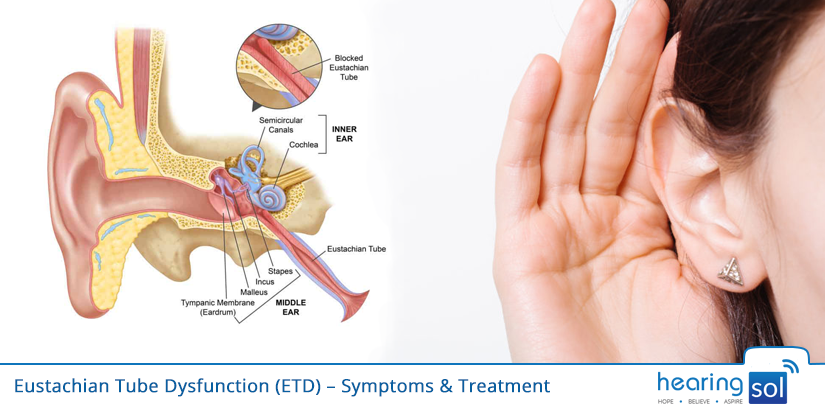
Eustachian tubes are narrow tubes that link your middle ear to the upper throat. These tubes are responsible for equalizing ear pressure and draining fluid from the middle ear. These tubes are usually closed except for when you chew, swallow or yawn.
-
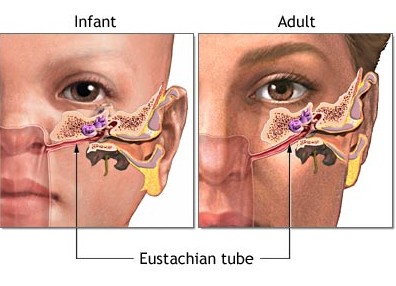
- The Eustachian Tube in infant and adult
You can purchase the latest hearing aids at a fair price through HearingSol, If you need any assistance or you have a query regarding Eustachian tube dysfunction and Hearing loss, feel free to call us at +91-9327901950. We are always here to help you.
The eustachian tubes have several important functions:
- It opens and closes in order to change in comprehensive air pressure for equalizing the air pressure in the middle ear. The middle ear is a part of the ear behind the eardrum.
- It might close in response to loud noises in order to protect the delicate ear structure.
- It is responsible for the clearing of mucus from the middle ear by allowing it to drain into the back of the throat.
The eustachian tubes in children are at a more horizontal angle than in adults. This tube enlarges and becomes more verticle with increasing age to provide better drainage. This is why children are more likely to suffer from eustachian tube dysfunction.
Now it’s time to discuss ETD causes, symptoms, diagnosis, and all types of treatment available.
What is Eustachian Tube Dysfunction (ETD)?
Have you ever felt that your ears are blocked and because of this you couldn’t hear? Have you ever had popping or clicking sound in your ear? Are you having trouble with keeping your balance?
If you have any of the above conditions than you might have a Eustachian tube dysfunction because the above symptoms are associated with eustachian tube dysfunction.
-
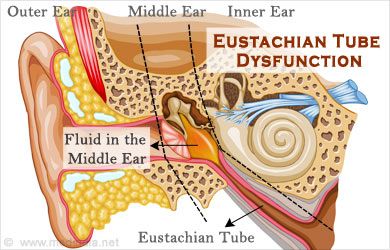
- Eustachian Tube Dysfunction
When the Eustachian tube experiences problems, then it gives rise to what is called a Eustachian tube dysfunction. That is when the tube is either fails to equalize pressure or is unable to clear mucus from the middle ear.
In medical science, the chronic blockage of the Eustachian tube is called Eustachian Tube Dysfunction (ETD), as commonly referred to by professional doctors and medical practitioners around the world.
How ETD Is Caused?
There could be many factors that cause Eustachian Tube Dysfunction (ETD) in individuals, especially in young children aged 1 to 6 years old.
These young children are more at risk of this type of problem because of the reason that they have very narrow Eustachian tubes than older people.
Some common eustachian tube dysfunction causes are:
- This can occur from inflammation of the mucous membranes from allergies or sinus infection in the ear.
- It can be caused due to excessive lymphoid tissue around the tube.
- In certain scenarios, the Eustachian tube may not open or close properly, which it should do.
- A Eustachian tube can be blocked by an enlarged tissue like Adenoids.
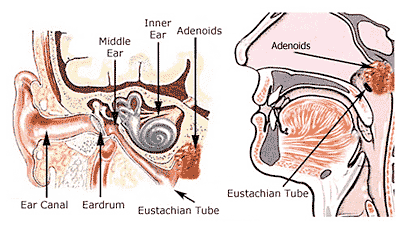
- Altitude changes from Hiking, traveling through mountains
- Flying through a plane and riding in an elevator can also be a cause
- A Eustachian tube that is abnormally small from average
- A trauma caused by repeated changes in comprehensive air pressure
- Nasal congestion caused by allergies/infections
- Infection in the ear itself
- Benign growth of tumors blocking the eustachian tubes
- People who Smoke has a higher chance of ETD because smoking damages the cilia which allow mucus to gather in the tubes
- People who are fat are also having a higher chance of ETD because fatty deposits around the tubes can lead to ETD
As such, long-term ETD in children has been associated with damage to the middle ear and the eardrum from fluid build-up. But when bacteria contaminates this fluid build-up in the ear, then it causes infection in the middle ear.
A point of concern is that if chronic ETD remains untreated, then it could even lead to loss of hearing in the affected children. Thus, extra care is necessary to deal with such problems.
What Are ETD Symptoms?
The Eustachian Tube Dysfunction symptoms include:
- Ears feel plugged or full
- Feeling pain in both the ears
- Hearing ringing noise in the ears (aka Tinnitus)
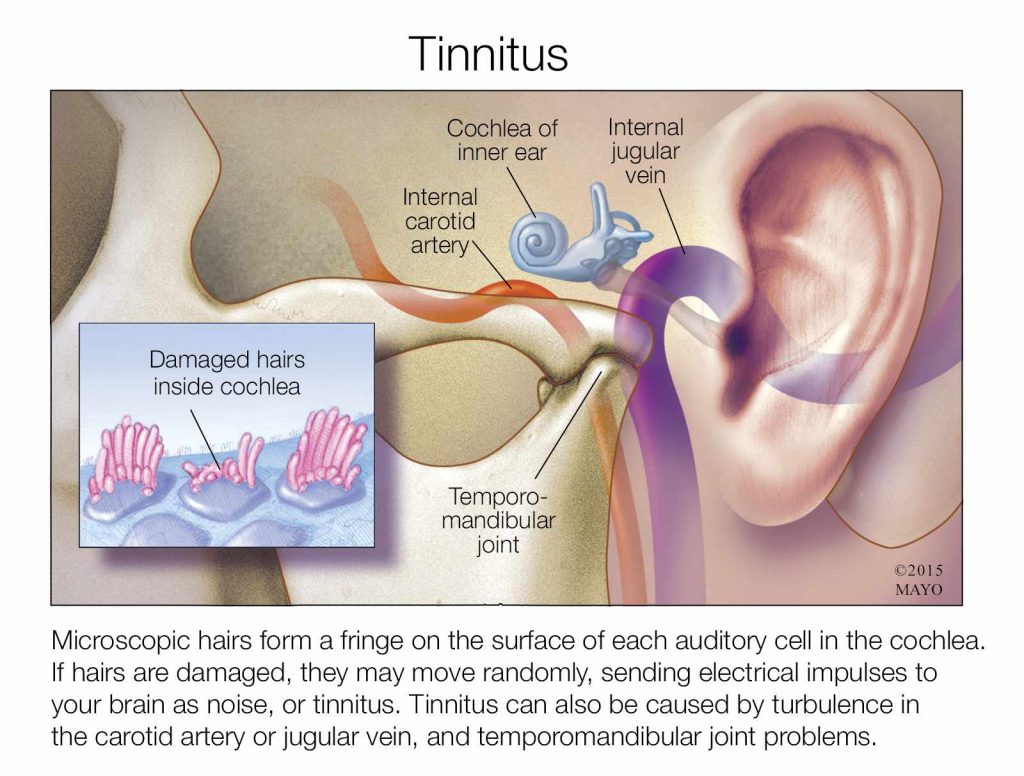
- Hearing muffled sounds
- Feeling a popping or clicking sensation (tickling in the ears)
- Trouble keeping the balance
- Ears feeling like they are filled with water
If you are having any of the above symptoms then consult your doctor. Your doctor will confirm whether you have ETD or not.
In case you have ETD than the next step of your doctor is to diagnose it.
How ETD Is Diagnosed?
There are various methods to diagnose the causes of eustachian tube dysfunction. First of all, your ENT specialist doctor will ask you about your pain, hearing changes, and other symptoms that you are going through.
After reviewing your medical history or symptoms, your doctor will begin to assess the use of several different instruments. Some of which are:
- Otoscope – It will be used to look at your eardrum. Fluid in the ear can happen by changes in appearance or mobility. Through this, a ruptured eardrum can also be diagnosed.
- Fiber Optic Endoscope – It is an instrument which is inserted through the nose to see if any enlarged tissues are blocking the Eustachian tube as shown in the below image:
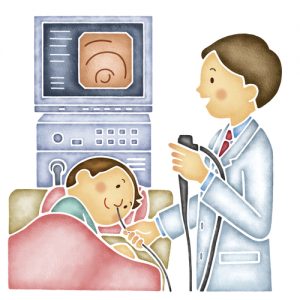
- Tympanometry – Through this instrument ear pressure in the middle ear can be measured. A high-pressure reading indicates the eustachian tube dysfunction.
These tests are pretty simple and none of these cause any kind of harm or discomfort. And if there are any serious problems, and Imaging tests like CT Scan Or MRI might be ordered to look for the tissues that are blocking the tube.
How ETD Is Treated?
Eustachian Tube Dysfunction Treatment depends on the severity and cause of the condition. Usually, ETD resolves within a few days without treatment.
If the Symptoms of ETD don’t go away within a few days then following are the various treatment to cure Eustachian tube dysfunction:
Home Remedies For ETD
If the symptoms of ETD are bothering you, some simple home remedies may help. These remedies are very effective for minor symptoms especially if they are not caused by an illness.
Some of the Eustachian Tube Dysfunction home remedies are:
- Chewing Gum
- Swallowing
- Yawning
- Breathing out with nostrils while the mouth is closed
- Using a saline nasal spray to clean out passageways as shown in the following video:
To resolve minor ETD symptoms in infants, give the baby a bottle or pacifier to suck.
Medicines
If your symptoms are not going away through home remedies then it might also be possible that the symptoms are caused by a bacterial infection.
If the symptoms of ETD is caused by a bacterial infection your doctor may prescribe:
- A decongestant to reduce the swelling of the lining of the tubes
- An antihistamine or steroid nasal spray to reduce the allergic response
- Antibiotics in the form of ear drops or oral tablets
- Oral corticosteroids for severe inflammation
- Over-the-counter medication
These are some medication treatment for Eustachian tube dysfunction. And if your symptoms are not going away with these medications than surgery is the only method left to cure ETD.
Surgery
The primary goal of surgical treatment of the Eustachian tube is to bypass the tube to ventilate the middle ear. This surgery can restore hearing, relieve pressure sensation in the ears, and reduce the possibilities for middle ear infections in the future.
Surgery for Eustachian Tube Dysfunction Include:
- Myringotomy – In this, a tiny hole is made in the eardrum to suction out any fluid in the middle ear. In adults, this hole stays open long enough to allow reducing the swelling in the Eustachian tube lining. The eardrums usually heal in three days and if the eustachian tube lining has not recovered than fluid might began to re-accumulate in the middle ear. Watch the following video:
- Pressure Equalization Tubes – In this type of surgery, a tiny hole is made in the eardrum and after suctioning out middle ear fluid, a tiny tube that is made of either plastic or metal is inserted into the eardrum. It provides middle ear ventilation for 6 to 12 months and the eustachian tube will have recovered by this time. Take a look at the video below showing the whole procedure and watch till the end:
- Balloon Dilatation – It is a process that aims to dilate the Eustachian tube and improve its functioning. A balloon filled with saline will catheter into the Eustachian tube through the nose under transnasal endoscopic vision. The pressure is maintained for approx 2 minutes after which the balloon is emptied and removed. The following video can describe this process more specifically:
- Eustachian Tuboplasty – In this, a laser or rotatory cutting tool is used to strip away enlarged mucous membranes and cartilage to clear obstruction of the Eustachian tube. Tuboplasty is used when a patient has chronic ETD to pressure-equalizing tubes. Following video can help you more to understand:
- Transtibial Application – It is a rising approach for the application of fluids into the middle ear through the Eustachian tube. It involves placing a nasal microendoscope in the eustachian tube.
Conclusion
Prevention is always better than cure and in the case of Eustachian Tube Dysfunction, the tools for prevention is simple.
To prevent pain caused by repeated changes in air pressure, swallow or yawn regularly. Air pressure changes in situations like taking off in a plane or driving up a steep mountain.
In some cases, taking a decongestant before flying or diving can help in its prevention. A decongestant like Pseudoephedrine.
If you feel air pressure related ear trauma than give it some time to heal. A ruptured eardrum naturally gets better by itself in a few days. If symptoms persist, immediate concern to an Otolaryngologist.
You can purchase the latest hearing aids at a fair price through HearingSol, If you need any assistance or you have a query regarding Eustachian tube dysfunction and Hearing loss, feel free to call us at +91-9327901950. We are always here to help you.

 Reviewed by Mr. Ranjeet Kumar
Sr. Audiologist, Speech Therapist & Cochlear Implant Specialist, BASLP on
Reviewed by Mr. Ranjeet Kumar
Sr. Audiologist, Speech Therapist & Cochlear Implant Specialist, BASLP on